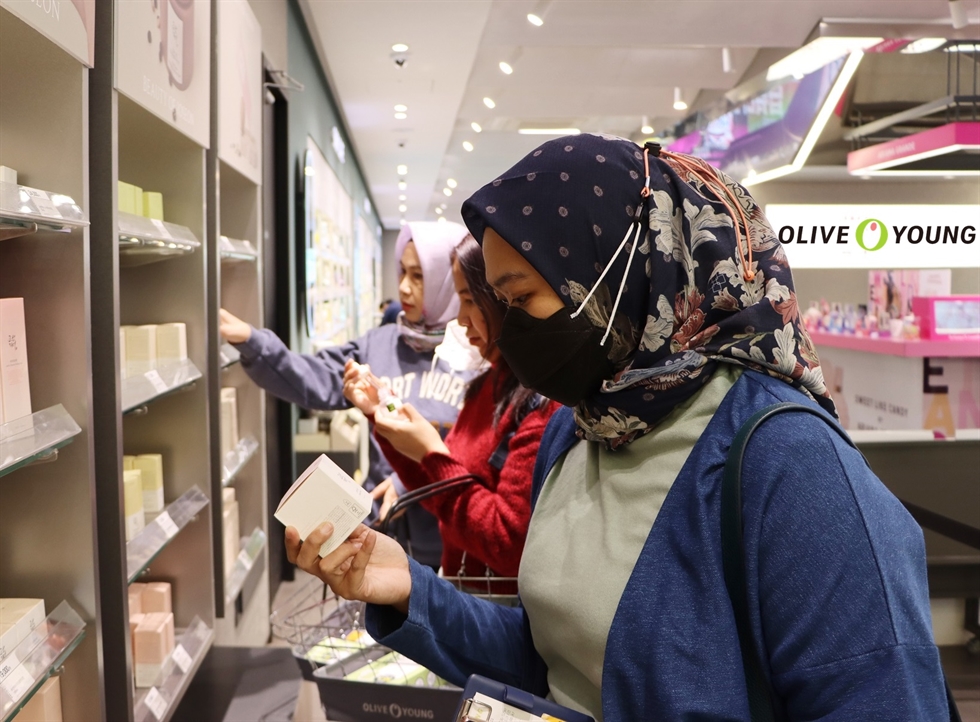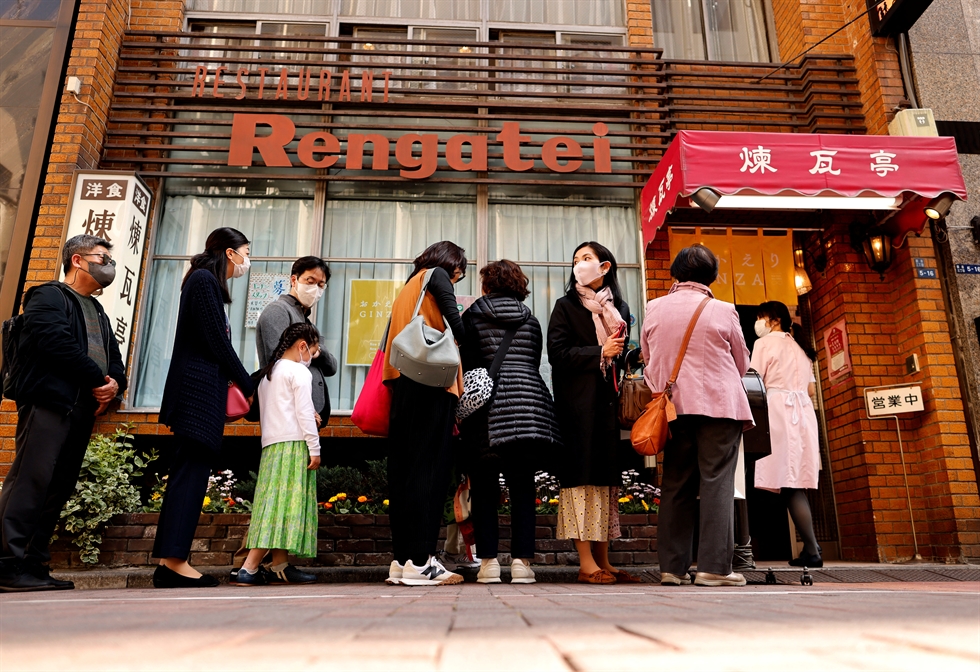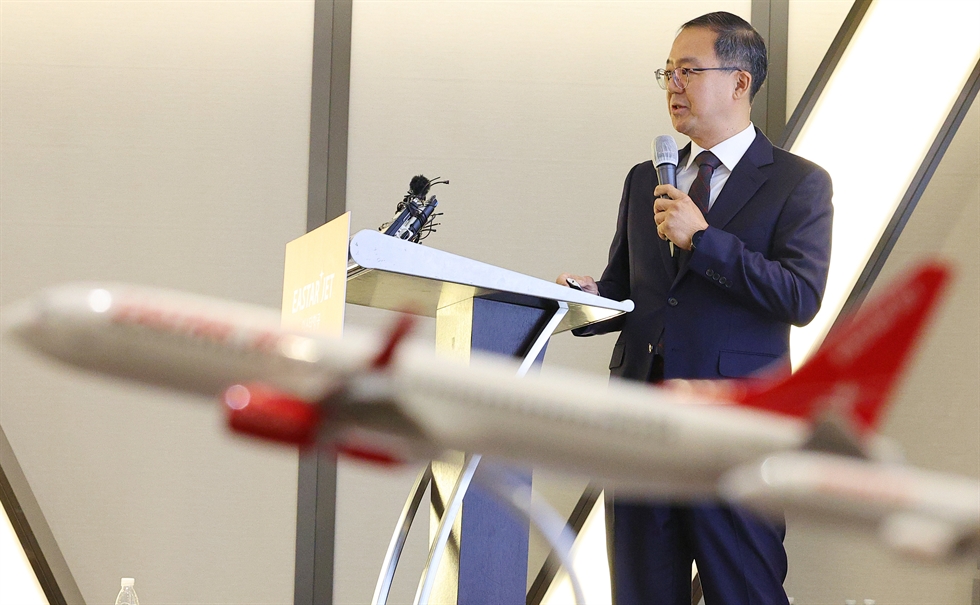Lifestyle
Ortoprotese espera fazer diferença na qualidade de vida de amputados

At least 10,000 amputations occur in Korea every year as a result of accidents, infections, or injuries. Kim Jung-hyun manufactures prosthetics at Silobionic, an established company that has been manufacturing, designing, and customizing prosthetics for 14 years. His interest was motivated by his desire to help people with disabilities and alleviate their discomfort.
“My younger brother has a disability. Growing up, I always wanted to do something to help people who have lost a limb, to make them feel more capable and give them hope. I also love working with my hands, so I thought of ways to combine these two things to help people living with disabilities,” he said during a recent interview with The Korea Times.
Kim decided to become an orthopedic prosthetist because it seemed like an important job to him. He was also confident in making prosthetics more realistic so that amputees would not encounter discrimination.
He explained that prosthetics are more than just self-care products designed to help people with disabilities move or walk more easily. A prosthetic limb should not only be functional and precise but also realistic in its appearance with a realistic texture. Thus, Kim’s work combines the characteristics of science and art.
“Prosthetics are not just difficult to make; they require a lot of effort to meet the demands of each patient. We continue to monitor our clients because they may develop symptoms or side effects. Our goal is to create products that can improve the health and quality of life of amputees using our professional knowledge,” said Kim.
Kim said that most of his clients are people who have had amputations of hands or feet, followed by amputations of upper and lower limbs. More than 170,000 people are living with amputation in Korea, according to 2020 data from the Ministry of Health and Welfare.
The cost of a prosthetic can be expensive, ranging from 1 million won (US$768) for a finger to well over 100 million won for a complex limb. They require replacement parts every year that can cost millions of won more, and only a small fraction of the cost of the limbs is covered by insurance.
“Unfortunately, people with disabilities in Korea receive little financial assistance from the government to pay for prosthetics compared to the US and other developed countries, where the total cost of prosthetics is covered,” he said. “The amount that insurance is willing to pay for the simplest prosthetics is about 90%, which is insufficient. Advanced prosthetics can be obtained by the wealthy and those who receive charity support.”
Most amputees are more likely to be poor, belong to marginalized groups, and have chronic diseases such as diabetes, which reduce their mobility. Kim explained about the design and production process of prosthetics that involve a series of steps to create an artificial limb.
“First, we consult with the client to collect information and data before making the prosthetic, which helps us determine which product will be suitable for them,” he said, adding that precision and attention to detail are important.
Next, they move on to the actual manufacturing process. Kim noted that one of the most difficult steps is the coloring process, which involves determining the exact skin tone of the amputee and then creating a silicone-like substance that matches the same tone.
“Many specialized companies in prosthetic products have only a limited range of colors to match a client’s skin tone, which makes things difficult. That’s why we introduced the skin color measurement device that can distinguish 22,000 different skin tones and can match a client’s skin tone with a 90% level of accuracy,” explained Kim.
Next, they engage in a meticulous process of modifying the mold to reflect the idealized design. They then manufacture an accurate plaster model of the stump. The molds are cut using a variety of electric and pneumatic tools as well as sanders to ensure that the sockets fit the client’s stump size. After ensuring the ideal fit, they make artificial nails.
“People have different skin colors and nail shapes, so we make customized nails. Then we make the actual limb, using a special type of silicone,” he said. Once done, the new prosthesis is delivered to the client for a fitting test. Other adjustments are made, if necessary. If everything fits well, the client gets the new prosthesis.
Kim expressed his desire to make a significant impact on the lives of amputees, allowing them to live more comfortably and independently. “I make prosthetics for amputees so that they can live a comfortable life,” he said.

Lifestyle
Myeong-dong atingido por COVID se recupera com o retorno dos turistas

Por Lee Hae-rin
O icônico distrito de compras e turismo da Coreia, Myeong-dong, está florescendo novamente com o retorno de viajantes estrangeiros motivados por seu amor pela cultura, dramas e cosméticos coreanos.
Kai Diaz, uma americana de 26 anos, disse ao The Korea Times, segunda-feira, em Myeong-dong, que fez uma lista de coisas que precisava fazer com base em seu drama coreano favorito e nos canais do YouTube, Facebook e Tik Tok enquanto fazia uma contagem regressiva. os dias para sua primeira viagem à Coreia durante a pandemia.
Diaz, que se apresentou como uma “grande fã de K-drama”, disse que sua série coreana favorita despertou seu interesse por K-beauty e a levou a procurar produtos para a pele para levar para casa no último dia de sua jornada de cinco dias. .
“Não há muitos bons de onde eu sou (Nevada). Mesmo se houvesse, ou é muito caro ou você tem que pedir online”, disse ela, acrescentando com entusiasmo que voltará à Coréia para explorar mais sua cultura e visitar áreas fora da capital, como Busan e Jeju.
Na segunda-feira, Myeong-dong estava lotado de turistas fazendo compras em grupos de familiares e amigos. As lojas de cosméticos e roupas que fecharam durante a pandemia de coronavírus abriram novamente e as ruas ficaram cheias de viajantes internacionais carregando sacolas de compras e comida de rua, criando um forte contraste com a atmosfera de cidade fantasma atingida pela pandemia alguns meses atrás.
A CJ Olive Young, a maior franquia de drogarias da Coreia que tem mais de 1.300 filiais em todo o país, disse, no domingo, que as vendas geradas por turistas em cinco de suas lojas em Myeong-dong deram um salto vertiginoso de 29 vezes durante o mês de março (de 1º de março a 21 de março). 1 a 17) em relação ao mesmo período do ano anterior.
 |
Os turistas respondem por uma proporção crescente das vendas, mostram os dados da empresa. Eles respondem por 73% das vendas em cinco lojas em Myeong-dong este mês, o que representa um aumento de mais de seis vezes em relação ao ano passado. As principais nacionalidades responsáveis pelo crescimento das vendas foram do Sudeste Asiático, Japão, Américas e China, em ordem de porcentagem.
Além de Diaz, vários turistas entrevistados neste dia também disseram que sua motivação para viajar para a Coreia e visitar Myeong-dong era seu amor e interesse pela cultura coreana, incluindo dramas coreanos, K-pop e conteúdo do YouTube.
Além do crescente interesse internacional na cultura coreana, a flexibilização dos regulamentos de viagens e a suspensão dos mandatos de testes de PCR em chegadas de estrangeiros causaram um afluxo de viajantes internacionais e revitalizaram o distrito comercial, de acordo com a análise da empresa.
No entanto, os chineses do continente, que representavam a maior parte de mais de um terço dos visitantes de Myeong-dong antes da pandemia de COVID-19, ainda não compareceram, de acordo com os vendedores e empresários do distrito.
“Nós (vendedores ambulantes) sentimos que os viajantes chineses ainda não voltaram para valer”, disse Lee Kang-soo, gerente do sindicato de vendedores de Myeong-dong ao The Korea Times, na segunda-feira. “Ocasionalmente, você pode ouvir a língua chinesa falada na rua, mas eles são principalmente de Hong Kong, Cingapura ou Taiwan”, disse Lee.
A maioria dos viajantes chineses que planejam visitar a Coreia ainda espera que seus vistos de turista sejam emitidos e Myeong-dong espera ainda mais tráfego de turistas com o tempo, explicou Lee.
Enquanto isso, a Polícia Metropolitana de Seul lançou uma repressão de seis semanas contra acomodações não registradas e filmagens ilegais nessas instalações, a partir de segunda-feira, para “prevenir e regular crimes contra turistas”.
Lifestyle
‘Omurice’, comida de conforto para japoneses e coreanos, símbolo de laços mais calorosos

Almost everything about President Yoon Suk Yeol’s first summit with Japanese Prime Minister Fumio Kishida in Tokyo will be examined for signs of warmer bilateral ties, including a shared meal of a Tokyo classic called omurice.
The dish, whose name is a mixture of omelette and rice, has become the talk of the town since Japan’s Fuji TV reported on Monday a hushed-up plan by Kishida to treat Yoon at Rengatei, the historic, no-frills eatery that invented it.
Yoon, a self-described foodie and avid cook, reportedly had “unforgettable” memories of the omurice he ate in his youth at the 128-year-old establishment in Tokyo’s Ginza district. He made frequent trips to the Japanese capital in 1966 while his father, a university professor, spent a year there, he told the Yomiuri newspaper.
Japanese and Korean authorities declined to confirm the plan or the location, while Rengatei, famous as the birthplace of omurice in 1900, declined to comment.
While many foreigners may associate Japanese cuisine with sushi or tempura, “yoshoku,” or Western-influenced dishes like omurice and tonkatsu (fried pork cutlet), are more common fare on Japanese dinner tables.
Yoshoku is a genre of Japanese cuisine established more than a century ago, and some made it to South Korea in the 1960s when ethnic Koreans traveled between the two countries, said Motoo Kawabata, a professor at Kwansei Gakuin University specializing in global restaurant strategy.
Kishida and Yoon are reportedly sharing a more formal sukiyaki dinner beforehand, but the real ice-breaker may be when they sit down to the omurice, said Kawabata. Japan and Korea are holding a summit for the first time in 12 years, seeking to mend severely deteriorated relations.
“It may be an effort to promote a relaxed atmosphere, through a casual dish that both Japanese and Koreans consider home food,” he said. Rengatei’s price for its omurice: 2,600 yen (US$19.57).
Kawabata said omurice in Korea typically has a thinner, firmer layer of egg, while the image of a perfectly executed egg in Japan has a fluffy, liquid, almond-shaped top that covers the ketchup-covered fried rice.
“Yoon may have been impressed by the smoothness of Japanese-style omurice,” Kawabata said.
Although Rengatei’s original dish mixed the egg mass with the rice, omurice as Japanese know it today was conceived and popularized in Juzo Itami’s 1985 film Tampopo, a critically acclaimed meditation on food and one of Japan’s most famous movies.
Hiroshi Modegi, the third-generation proprietor chef of Taimeiken, which appears in the film, said he was disappointed his restaurant was not the president’s choice but welcomed the renewed attention on omurice.
“I hope the world discovers that Japanese culinary culture also has such a dish,” he said. (Reuters)
 |
Lifestyle
Eastar Jet planeja comprar 7 aviões

Por Lee Hae-rin
Após um hiato de três anos devido a problemas financeiros, a Eastar Jet, uma companhia aérea local de baixo custo (LCC), busca decolar mais uma vez introduzindo novos aviões e rotas internacionais ao retomar o serviço.
Ao anunciar a retomada dos voos entre Gimpo e a Ilha de Jeju, seu CEO Cho Jung-seok disse que a empresa expandirá sua frota em até 10 aviões até o final deste ano.
“Entre eles, três aviões existentes, que foram revisados regularmente durante a pandemia, e os três primeiros aviões novos serão usados para voar entre Gimpo e Jeju”, disse ele em entrevista coletiva.
Como as restrições de viagens internacionais foram suspensas, a maioria dos aviões foi usada para voos internacionais, resultando em escassez de rotas domésticas e aumento nos preços das passagens – principalmente voos para Jeju, cujo preço médio via LCC ultrapassa 60.000 won (US$ 45). em comparação com um nível pré-pandêmico de 30.000 a 40.000 won.
O CEO acredita que o plano da Eastar de fornecer 4.500 assentos diariamente acabará por reduzir os preços dos voos de Jeju de acordo com a oferta e a demanda. A companhia aérea também lançará promoções oferecendo passagens para Jeju por 9.900 won e 19.900 won a partir de quarta-feira.
No segundo semestre, o LCC lançará rotas internacionais, começando por Songshan, em Taiwan, com mais um novo avião. Depois disso, planeja fornecer rotas conectando Incheon com destinos populares do Japão e do Sudeste Asiático, incluindo Osaka, Narita, Fukuoka, Tailândia e Vietnã.
Para executar esses planos, a Eastar Jet recrutará 500 pessoas, priorizando ex-funcionários que foram demitidos durante a pandemia.
Fundada em outubro de 2007 pelo ex-deputado Lee Sang-ik, do Partido Democrata da Coreia, a Eastar Jet sofreu dificuldades financeiras com a pandemia, bem como com o problema de peculato do fundador. Cerca de 500 de seus funcionários foram despedidos quando a Jeju Air, a maior LCC do país, tentou adquirir a Eastar. Ele interrompeu todas as operações de voo em 24 de março de 2020.
A problemática transportadora de baixo custo recuperou a estabilidade financeira depois de ser adquirida pelo fundo de private equity VIG Partners no início deste ano e decidiu retomar os serviços de voo.












